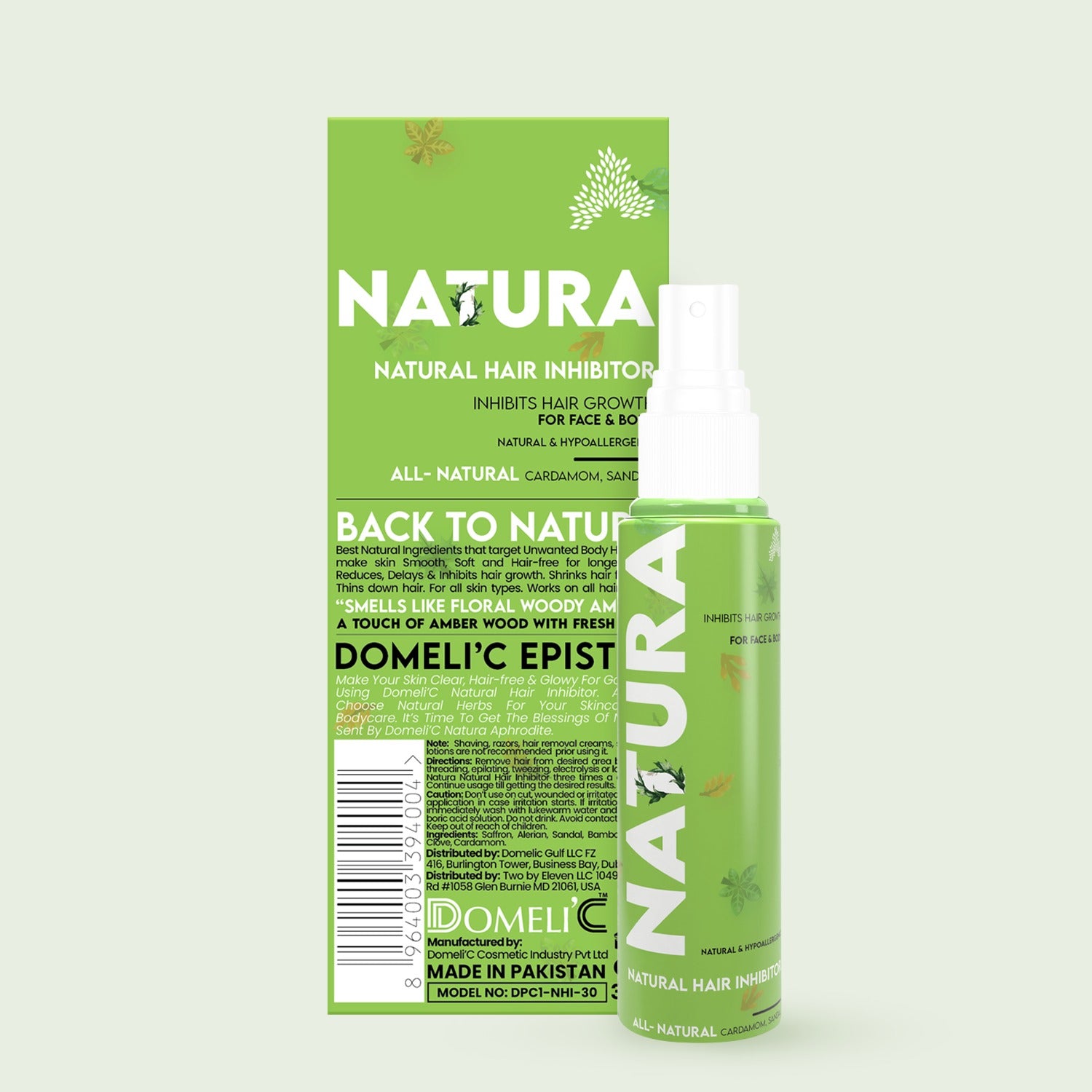Many individuals find themselves pondering the best methods for removing unwanted belly hair. Whether driven by personal preference, comfort, or aesthetic reasons, the quest for smooth skin is a common concern.
Understanding Belly Hair
The presence of belly hair, while often a subject of cosmetic concern for many, plays a role in our biological makeup and health. Here’s a closer look at why we have belly hair and the factors that influence its growth.
Why We Have Belly Hair
Belly hair, like all body hair, is not without purpose. It serves several biological functions:
Temperature Regulation: Body hair helps regulate temperature by providing insulation. It traps a layer of air to keep the body warm in cold conditions and wicks away sweat to aid cooling when it's hot.
Protection: Hair acts as a barrier, reducing friction on the skin from clothing and other external factors. It also offers a minor shield against bacteria and other pathogens.
Pheromone Dispersal: Some researchers believe body hair plays a role in natural scent dispersion, which could have played a part in mate attraction in early human history.
Factors Affecting Belly Hair Growth
The amount and texture of belly hair vary significantly from one individual to another, influenced by several factors:
Genetics: Perhaps the most significant determinant, genetics dictate hair color, density, and texture. If your family members have more belly hair, you're likely to experience the same.
Hormones: Hormonal levels, particularly androgens (male hormones found in both men and women), significantly impact body hair growth. Variations in these levels can lead to changes in belly hair density.
Age: Hormonal changes with age can alter hair growth patterns. For example, women may notice increased belly hair growth during and after menopause due to hormonal imbalances.
Ethnicity: Certain ethnic groups are predisposed to having more or less body hair, which includes hair on the belly.
Health Conditions: Conditions like Polycystic Ovary Syndrome (PCOS) in women can lead to increased hair growth due to elevated androgen levels.
How to Shave Stomach Hair
Shaving is a quick and convenient method to remove stomach hair, offering immediate results. However, achieving a smooth, irritation-free shave requires careful technique, especially on the sensitive abdominal area. When combined with the use of a hair inhibitor, you can not only remove hair but also slow down its regrowth over time.
Step 1: Choose the Right Tools
Razor: Opt for a sharp, multi-blade razor specifically designed for body shaving. A fresh, sharp blade minimizes the risk of nicks and cuts.
Shaving Cream or Gel: Select a hydrating shaving cream or gel to protect and lubricate your skin. For sensitive skin, choose products that are fragrance-free and hypoallergenic.
Step 2: Prep Your Skin
Exfoliate: Gently exfoliate your stomach area with a loofah or body scrub to remove dead skin cells and lift hair away from the skin, reducing the chance of ingrown hairs.
Hydrate: Soften the hair and skin by showering or bathing in warm water for a few minutes before shaving. This step is crucial for a smoother shave.
Step 3: Apply Shaving Cream or Gel
Generously apply shaving cream or gel to the stomach area. This creates a protective barrier between the razor and your skin, allowing for a smoother glide and reducing irritation.
Step 4: Shave Gently
Direction: For the initial pass, shave in the direction of hair growth to minimize irritation. If necessary, you can gently shave against the grain for an even closer shave on a second pass.
Avoid Over-Shaving: Pass over each area only as many times as necessary to reduce the risk of razor burn and irritation.
Step 5: Rinse and Dry
After shaving, rinse your skin with cool water to remove any remaining shaving cream and soothe the skin. Pat your stomach dry with a soft towel; do not rub.
Step 6: Apply Hair Inhibitor
Once your skin is dry, apply a hair growth inhibitor to the shaved area. These products usually come in the form of creams, lotions, or sprays.
Consistent Use: For best results, use the hair inhibitor as directed by the product instructions, typically daily. Consistent use can significantly slow down hair regrowth over time.
Step 7: Moisturize
Finish by applying a gentle, alcohol-free moisturizer to hydrate and calm the skin. This step is crucial for maintaining skin health and preventing dryness or irritation.
Innovative Solution for Stomach Hair Removal
When it comes to removing or reducing stomach hair, there are several innovative solutions beyond traditional shaving, waxing, or professional treatments. Among these, hair growth inhibitors and natural remedies offer alternative approaches to manage belly hair growth more gently and sometimes more permanently.
Hair Growth Inhibitors
Hair growth inhibitors are products designed to reduce hair growth over time, making them an excellent option for those looking for a more lasting solution to stomach hair. Here’s how they work and can be applied to manage belly hair:
Mechanism: These inhibitors work by targeting the hair follicles, slowing down the growth cycle of new hairs. They often contain active ingredients that either reduce the nutrient supply to the hair follicle or directly inhibit the enzymes responsible for hair growth.
Application for Belly Hair: After your usual hair removal method (e.g., shaving or waxing), apply the hair growth inhibitor as directed on the product label. Most inhibitors require daily application to the cleaned and dried stomach area for optimal results.
Benefits: With consistent use, hair growth inhibitors can significantly reduce the density, thickness, and growth rate of belly hair. Over time, this can lead to a less frequent need for hair removal and smoother skin.
Permanent Removal Options
For those seeking a long-term solution to belly hair, laser hair removal and electrolysis present two of the most effective methods. Each offers a unique approach to achieving smooth skin, with their effectiveness, processes, and suitability varying.
Laser Hair Removal
Laser hair removal uses concentrated light beams to target and destroy hair follicles, significantly reducing hair growth over time. Here's how it applies to belly hair:
Process: The laser emits a light absorbed by the pigment (melanin) in the hair. This light energy is converted to heat, which damages the hair follicles that produce hairs. This damage inhibits or delays future hair growth.
Electrolysis for Permanent Results
Electrolysis offers another permanent solution by destroying the growth center of the hair with chemical or heat energy. Here’s a comparison with laser removal:
How It Works: A fine probe is inserted into the hair follicle, delivering an electric current that destroys the follicle's ability to produce hair. Each hair follicle must be treated individually, making the process somewhat time-consuming.
Effectiveness and Duration: Electrolysis is the only FDA-approved method for permanent hair removal. It works on all hair types and colors, including light or fine hair that lasers might miss. The number of sessions needed varies widely among individuals, depending on the area's size and the hair's density.
Hair Inhibitors as a Supplementary Measure
In addition to these permanent methods, hair growth inhibitors can serve as a supplementary measure, enhancing the longevity of smooth skin results. While not a standalone permanent solution, when used regularly following laser or electrolysis treatments, hair inhibitors can prolong the effects by slowing down any residual hair growth. This can be particularly beneficial for those with stubborn belly hair or those looking to extend the duration between maintenance sessions.
Conclusion
Navigating the world of belly hair removal doesn't have to be daunting. With the right approach and careful consideration of your skin's needs, achieving and maintaining smooth skin is entirely possible. Explore the options, try different methods, and remember that the best choice is the one that makes you feel most comfortable and confident. Ultimately, the journey to achieving smooth, hair-free skin is highly personal.
Frequently Asked Questions
Q1: Is it safe to shave belly hair?
Ans: It's safe when done with proper hygiene and care.
Q2: How often should I wax my stomach area to maintain results?
Ans: Typically, every 4-6 weeks.
Q3: Can laser hair removal permanently eliminate belly hair?
Ans: It can significantly reduce hair growth, but individual results may vary.
Q4: How can I minimize irritation after removing belly hair?
Ans: Use soothing, natural moisturizers and avoid harsh chemicals.
Q5: Should I shave or wax my belly hair for better results?
Ans: Waxing offers longer-lasting results compared to shaving.



